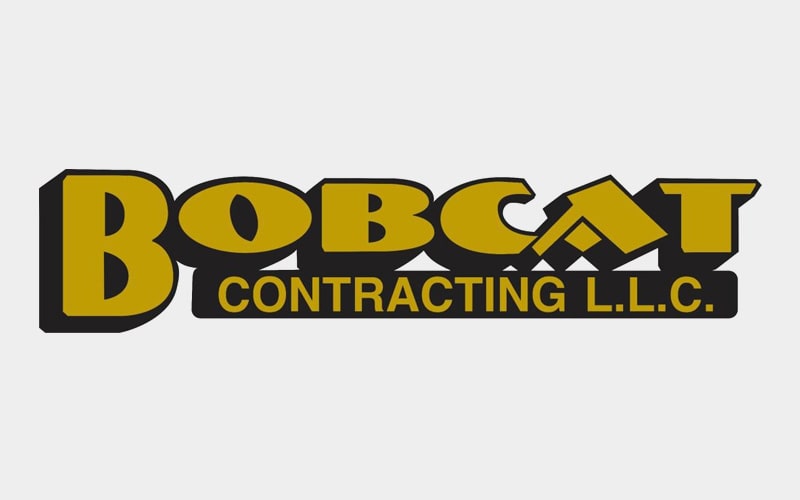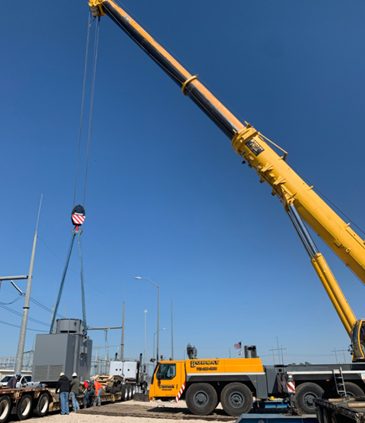
When you have a need a mobile solution for lifting small to medium-sized loads, a crane truck rental may be exactly what you need. Crane trucks are essentially standard big rigs, except they haul a working crane behind them rather than cargo. This allows these cranes to go virtually anywhere a standard working vehicle can, allowing you to quickly relocate your crane as needed.
When working with a crane truck rental, there are numerous considerations – but none are more important than safety. A crane can be one of the most dangerous machines on a worksite, and even a single mistake can cost lives, especially if it’s a mistake with a heavy load.
At Bobcat Crane, we’re fanatical about safety, and we have one of the best accident records in the industry because of that. We emphasize safety from the beginning of a job to its end, and we want to see our clients placing a similar emphasis on protecting their people and property. So, we’ve prepared this guide which covers most of the important safety issues with crane truck rentals, as well as when working with cranes in general.
Keeping Your People & Property Safe When Working with A Crane Truck Rental
1. Know the job site and its requirements
Before even renting a crane truck – or any other crane – you should know all the details of the job site it’s intended for. This includes the layout, the terrain and its weight limits, height clearances, and the location of any potentially dangerous features such as live electrical lines. You want to make sure you get a crane that will be able to fit into the space necessary and has room to maneuver both the truck and the loaded crane without creating any danger.
Having these details ready when working with your crane truck rental agency will help ensure you’ve got the right tool for the right job.
2. Watch the weather
There’s an easy rule of thumb when it comes to operating cranes in inclement weather: don’t do it. Cranes or their loads can be knocked around by high winds, and since cranes are electrically conductive, being hit by lightning would be absolutely disastrous. Not to mention that even small amounts of precipitation can make loads much more difficult to work with, and more prone to sliding.
You should plan usage of your crane around the weather, and always be willing to call a halt to crane operations if an unexpected storm blows in. Even if a delay is a bit costly, it’s far too dangerous to risk a weather-related accident.
3. Always hire experienced licensed crane truck operators
In most situations, your crane truck rental agency will have an option to send licensed workers along with the crane. They may even require it. However, if you are providing your own manpower, make certain they have experience with the equipment, along with all the proper licenses, permits, and insurance. Never allow an untrained individual to operate a crane or any of its associated equipment.
Likewise, be certain you have experienced riggers A loaded crane is only as safe as the load it’s carrying. This is particularly important if you’re lifting loads of unusual size, or with uneven weight distribution.
4. Have daily safety briefings that include everyone involvedin the job
A load should never be lifted and moved without a lot of pre-planning, and that planning should be the basis for safety briefings before the actual job. Everyone who will be working with the crane – including the operator, the truck driver, the riggers, and associated workers – should be fully informed about the job, and how it will proceed. This should be paired with safety-related information, such as exit routes in case of an accident, and the location of first aid kits and other emergency supplies. Plus, be sure to point out the location of anything on the job site that could potentially be dangerous to the crane.
These sorts of briefings are a daily occurrence when Bobcat is on a job, and it’s part of the reason why we have such a low accident rate. When your workers are fully informed and prepared for the job ahead, accidents happen far less frequently.
5. Clearly mark the crane’s operating area and keep other workers away
When working with a crane, there should be warning cones placed around the radius of the crane’s swing – including any additional length coming from the load itself. No one who isn’t directly involved in the lifting operation should be allowed into that zone. There’s no reason for any additional people to be in danger, and people wandering around could easily distract the operator, spotters, or other critical workers on the job.
Of course, if the crane truck moves around the job site in a day, be sure that the warning cones are relocated appropriately, and other workers are informed of its new location.
6. Inspect the crane and crane truck regularly
When you’re working with a crane truck rental, you’re effectively having to inspect and maintain separate pieces of equipment at once. Both the truck and the attached crane must be maintained at peak operating conditions at all times. Inspections should be regular, including spot checks before and after each job, as well as weekly in-depth checks if you’re using the crane truck on an extended basis.
Some of the most important things to watch for include:
-
Signs of rust on the truck or crane
-
Wear or loose threads on the cabling
-
Signs of wear or bending on the attachment hooks
-
Exposed or loose wiring
-
Low fluid levels
-
Any damage to the hydraulics or attached hoses
-
Malfunctioning electrical systems, such as lights
-
Malfunctioning communications systems
-
Proper tire inflation and tread depth
Finally, all the major systems – lights, comms, crane controls, etc. – should be tested prior to beginning the day’s job.
7. Protect the crane after work and in between jobs
Always store your crane or crane truck in an enclosed space overnight, and in between jobs, so that it’s protected from the elements. Also, if you’re working in an area where it gets particularly cold at night, you may need some minor climate control – numerous systems on cranes and crane trucks can potentially be damaged by sub-freezing temperatures, particularly if there’s a lot of humidity. Extensive climate control isn’t needed, just enough to keep the machines from freezing.
Properly storing your crane between uses will greatly reduce maintenance problems as well, making it a safety measure that also saves money in the long run.
Texas Trusts Bobcat Contracting for Cranes & Crane Truck Services
For over twenty years, we’ve been one of the top choices in Texas and Oklahoma for construction support services. We have an extensive selection of cranes and other machinery for rent, as well as a highly trained workforce who are qualified to operate or repair the machinery. Our emphasis on safety is why oil and gas companies, construction firms, and other contractors call on us for crane services.
Contact us for more information, or job estimates.

